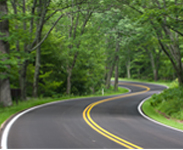Polishing How To
Motorcycles are built in all different kinds of finishes and metals. A common metal used on motorcycles is aluminum because of its aesthetics and light weight compared to steel. Most steel components on a motorcycle are either painted or chromed. Most aluminum parts are left unfinished, polished or painted. Other finishes can also be found like zinc plating and stainless steel. The great thing about some of these finishes is that even after oxidation, some can be brought back to life with a little cleaning and polish.
Chromed steel will eventually rust and pit over time if it is not protected and cleaned regularly. Usually if a bike is left outside and not waxed or cleaned often, the chrome components will rust (rims, spokes, trim, bars, etc.). Once chrome is pitted or rusted, it is pretty much damaged, but that doesn’t mean it can’t be cleaned up to be nice again. It may not be “show” quality anymore, but chrome can be made to look virtually unblemished. This can be done in a number of ways. Chrome polish may work well on chrome that is not very oxidized. It works well on chrome that looks to have a haze on it. Steel wool works great on pitted chrome. There are different levels of abrasiveness with steel wool. If it is too abrasive, it will scratch the chrome. A common house hold trick is to use Coke and tin foil, the acid cleans rust away. Vinegar is also a natural rust remover. Chrome can be polished with a buffer, but care has to be taken not to burn through the chrome.
Once the chrome is cleaned it has to be protected with a chrome cleaner or wax. If it is not protected it will start to oxidize quickly and the pits in the chrome may become larger and ruin the chrome more. If the chrome is beyond repair, the part will need to be re-chromed. In the re-chroming process, a chemical is used to strip the metal clean.
This site and articles contained herein are provided for general informational purposes only and are not a substitute or intended as professional advice. Please be sure to refer to your owner’s manual or consult a mechanic for information specific to your motorcycle. The information contained on this site and articles contained herein are provided on an “as is” basis with no guarantees of completeness, accuracy, usefulness or timeliness and without any warranties of any kind whatsoever, express or implied. Rider Insurance Company and its affiliates (together, “Rider”) assume no responsibility for any errors or omissions in the content of this site and articles contained herein. Any action taken upon this information is strictly at your own risk and Rider will not be liable for any losses or damages in connection with your use of this site and articles. Additional terms and conditions apply and are available at https://www.rider.com/plymouth-rock-assurance-general-terms-and-conditions/.

Aluminum and stainless steel oxidize differently than chrome. Although they do usually haze and lose their shine, unlike chrome they can be brought back to look new. Oxidized aluminum loses its luster and sometimes actually turns white. Aluminum that is subject to a lot of moisture will become very rough with pits and turn grey or white in color. Unlike chrome, when a metal is not plated, it can be polished back to shine. Depending on the oxidation, a course sand paper will be used to flatten the rough surface of the metal. Machine sanders can be used, like a DA sander, but caution would have to be used to not gouge the metal. Using different abrasive grits, the aluminum can be sanded until very flat and the shine is coming back. Unfortunately, sanding metal will leave scratches. Wet sanding which, is the process of using soap and water to lubricate the sand paper will further smooth the aluminum with ultra fine sand paper up to 600 grit. Once the aluminum is sanded smooth, it is ready to be polished. Using a buffing wheel attached to a bench polisher, buff the aluminum with course compound. This will take most of the scratches out made from the sandpaper and make the aluminum shine once again. This is a dirty job as compound will most likely go everywhere. The aluminum can be cleaned with metal polish and a softer buffing wheel can be installed on the bench polisher.
Using finer compound, the aluminum will now be buffed to a show-like sheen. Once again it can be cleaned with metal polish and wax. It will look as shiny as chrome when done correctly.
Stainless can be cleaned up the same way as aluminum, but it is much harder, which makes polishing tougher to do. Stainless will not oxidize the same as aluminum because it is designed to resist corrosion, but it may lose its shine over time. Most of the time sanding stainless is not even required. Buffing with a bench polisher will bring back its chrome-like shine. The metal will get hot during polishing, so wearing gloves is a good idea.
Other finishes may require different cleaning techniques, re-plating all together or an entire replacement of the part may be necessary if the damage is too extensive. Mother Nature is tough to overcome, so the best way to keep ahead of corrosion is to prevent it in the first place. Waxing and polishing periodically will keep finishes like new. Hard to clean places like spokes and inside nooks and crannies are usually the first places to corrode since they are not addressed regularly. Specialty cleaners and tools are designed to get into these places and keep them clean. Time to polish!
Plymouth Rock Assurance is a marketing name used by a group of separate companies that write and manage property and casualty insurance in multiple states. Motorcycle insurance in New Jersey and Pennsylvania is underwritten by Rider Insurance Company. Each company is financially responsible only for its own insurance products. Actual coverage is subject to the language of the policies as issued by each separate company.





